The first thing anyone needs to know about the food along the Camino de Santiago is, what that food consists of could vary depending on which route a pilgrim follows. There are numerous routes, starting in Spain, France, and Portugal. For the sake of keeping this simple and not overly lengthy, I’m concentrating purely on dishes with a robust link to Galicia.
We’ve approached Santiago del Compostela from two different caminos, the Camino Francés and the Camino Portugues. On the first we were surprised by the extent of the ‘industry’ that had grown up around the Camino de Santiago. Budget pilgrim’s menus are commonplace, but are they any good? I know the pilgrim’s food we had on the final stages of the Camino Francés was very ordinary. I also know some specialist Camino websites agree that many pilgrim’s menus might be cheap but they also lack quality and variety.
On the second route, from Portugal, we avoided pilgrim’s menus and simply ate in restaurants along the way that took our fancy, ordering specialities from whichever area we passed through. As a result, our gastronomic experience was a far more satisfactory one.
Tortillas
It’s Spain, there are tapas bars (taperías) serving the sort of tapas you’ll find across the country – croquetas, ensaladilla rusa, jamóns etc. However, tortillas are a bit of a thing in Galicia. What constitutes an authentic tortilla is a hotly debated topic all over Spain, but in A Coruña the council felt so strongly about it they banned the use of onion as an ingredient in the city’s famous annual tortilla contest.
Zamburiñas
For me, zamburiñas represent one of the dominant flavours of the food found along the Camino de Santiago. We enjoyed these small, smoky scallops at a restaurant near the border with Portugal and also in Santiago de Compostela itself. Scallops are obviously THE symbol of the Camino de Santiago, so a bit of a must for pilgrims.
Pulpo a la gallega
Another one of the ever-present dishes along the Camino is pulpo a la gallega (polbo a feira), slices of octopus sprinkled with paprika and served on a wooden platter or terracotta bowl. The best I’ve had was served with mashed potato, a dream of a pairing. We enjoyed pulpo a la gallega at various places along the route, including in an unassuming pulpería in Padrón where it was accompanied by red wine served the Galician way in a cunca, a porcelain cup without a handle.
Pimientos de Padrón
Talking of Padrón, I was excited at the idea of having a plate of pimientos de Padrón in the area where they originated. They’re so common in Spain, and tapas restaurants outside of Spain, just about everyone knows by now that these are moreish green peppers which are fried in olive oil and sprinkled generously with coarse sea salt. It’s also well known that around one in ten are YOWZA hot (although I haven’t had a hot one in years). What I didn’t know was there was a season for them (May-October) and while, ironically, I can get them year-round in most places, in Padrón I was a couple of weeks too early. I didn’t get to actually eat any pimientos de Padrón in Padrón.
Empanadas
Empanadas are another dish found across Spain whose origins are in Galicia. Basically, empanadas are savoury pies which, when you’re on the Camino, make for really good street food. They can be filled with meat or fish & seafood (including octopus of course). The best I had was a pasty-shaped affair from a tiny grocer in a nondescript village called Escravitude. Maybe it tasted so good because I ate it on the final leg into Santiago.
Mussels and Oysters
Fish and seafood feature heavily on Galician menus. Our Portuguese route veered from the main pilgrims’ path, taking us along the more picturesque Variante Espiritual. This involves a section sailing up the Ría de Arousa between Vilanova de Arousa and Pontecesures, passing floating platforms on which mussels are grown. Earlier on the route, we crossed a lovely historic bridge at Arcade, a pretty, small town at the mouth of the Ría Verdugo which is known for its oysters. In Combarro in Rías Baixas, the smell of freshly grilled fish from restaurants overlooking the Ría de Pontevedra can drive you insane. If you’re a fish and seafood fan, Galicia holds many gastronomic delights to try.
Filloas gallegas
You could easy pass by a Galician speciality in Santiago de Compostela without even registering it as being one. I did. Filloas gallegas look like French crêpes, but they aren’t the same. I didn’t know they were different until researching gastronomy for a Slow Travel guide we were writing about the Camino. Whereas French crêpes are made with eggs, milk, and flour, filloas gallegas can be made with stock, water and, this is for anyone wanting to try a truly authentic version, the blood from slaughtered livestock.
Albariño wine
Finally, as there’s so much excellent seafood to enjoy, the wine to drink with it has to be Albariño. Having spent four years in Portugal, we’d developed a taste for the light and fizzy vinho verde, much of which is made from the same grape. Albariño doesn’t have quite the same fizz but is equally drinkable. Like its Portuguese counterpart, you can get red and white varieties. But white is more popular. It’s a light, dry, citrusy wine that goes down a treat at the end of a long day walking on the Camino de Santiago.


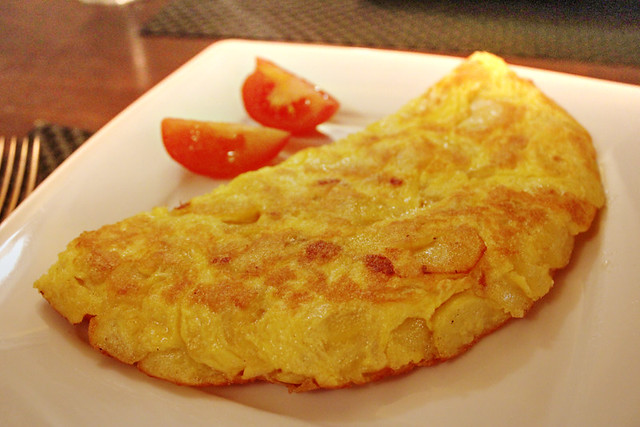
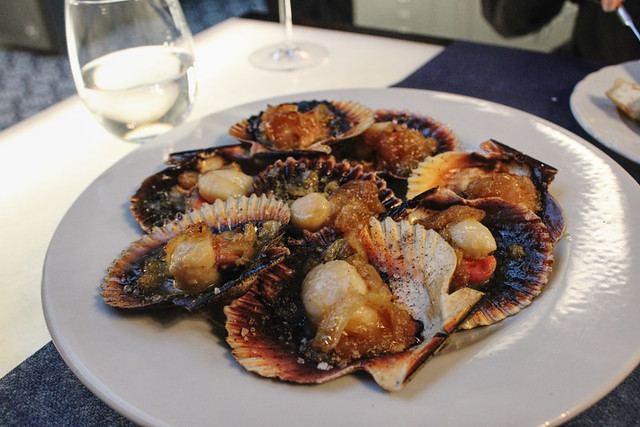
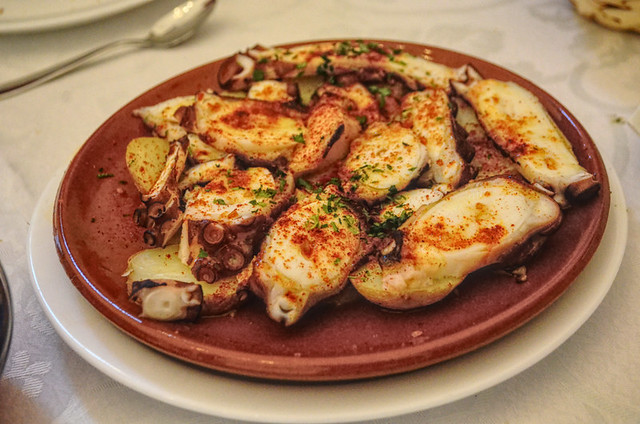
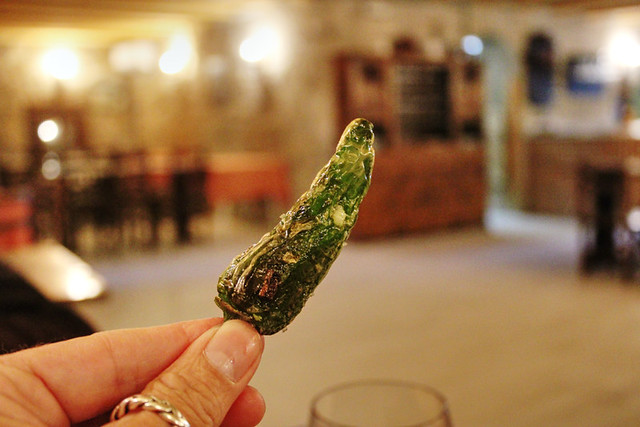
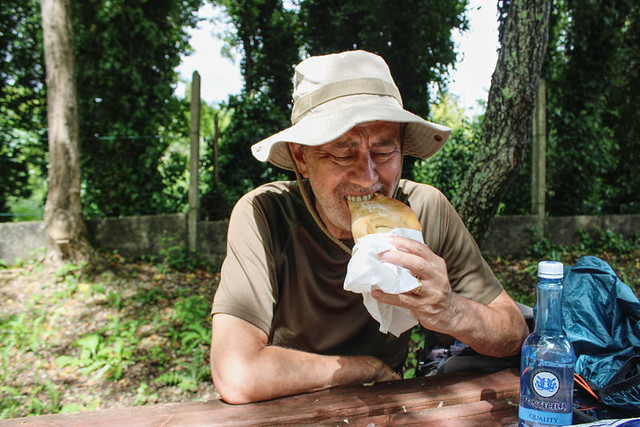





Be the first to comment